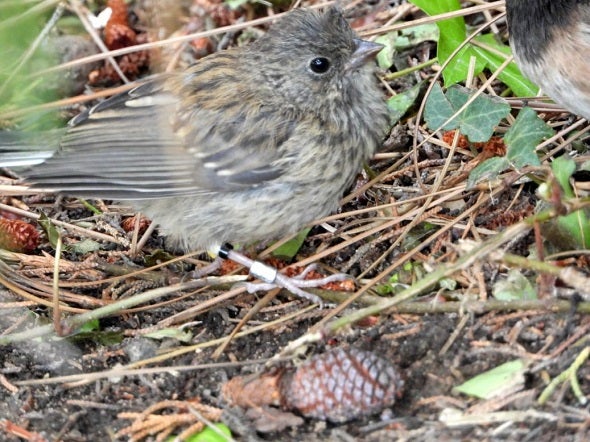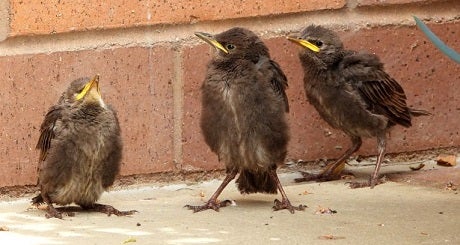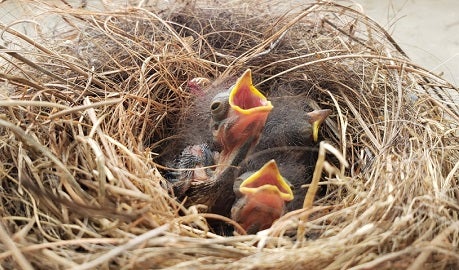
In the spring and summer it is common to find young birds away from their nests. Concerned students or staff often think the birds need rescuing, but it depends.
(At right: a juvenile junco, a small North American bird)
It's important to remember that nests are unsafe places to be; it's easier for a predator to kill four chicks that are in the same cup of sticks and hair than four chicks that are in four different parts of their parents' territory. As a result, parents will push their chicks out of the nest before they're fully able to fly and take care of itself.
Knowing when a young bird is old enough to be out of the nest is key to knowing if it's appropriate to intervene.
- If you have to chase after the chick to catch it, it's old enough to be outside the nest. If it's out in the open or in a dangerous place, try herding it to the nearest shrub or other protected place. Mom and dad know where the fledgling is and will feed it discretely.
- If the bird is sitting upright and is alert, it probably has recently left the nest. Check the wings, if the wings are fully or partially feathered (as opposed to being in gray-looking sheaths), it's old enough to be outside of the nest. If it's out in the open, or in a dangerous place, you can move it to a place nearby with greater safety.
- Most "baby" birds you find are old enough to be outside of the nest. They are where they need to be. Even if it looks like they're abandoned, they aren't. The parents are doing what they can to keep predators from getting their offspring.

(At left: starling fledglings)
It's hard to resist the impulse to help, but trying to rescue the bird means a lot more work and stress for you and the wildlife rehabber you take it to, when the parents will almost certainly do a better job for free.
(At right: junco nestlings)

- Very young nestlings (mostly naked, no or few feathers, can't sit up, appears helpless)
It might have fallen out of the nest; look around to see if you can find the nest. If so, put it back, if not, follow the directions in the article cited below, and then bring the nestling to a licensed rehabber.
- The chick is obviously injured (broken wings or legs.)
In this case, bring the chick to a licensed rehabber. If you know or suspect the chick was grabbed by a cat, bring it to a rehabber immediately! This is because cat mouths are breeding grounds for all sorts of nasty bacteria that kill birds, and any bird that has been exposed to cat teeth needs to be given antibiotics ASAP.
If you find a young bird out of its nest and aren’t sure what to do, you can call or text Chief Sustainability Officer Nurit Katz at (818) 384-9493. Nurit works with a network of wildlife rehabilitators and can help with transportation.
For more information: read "When you should-and should not-rescue baby birds"
